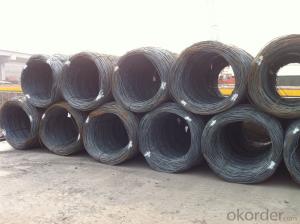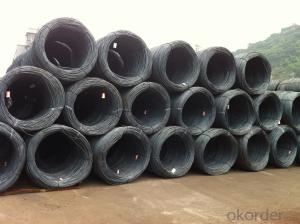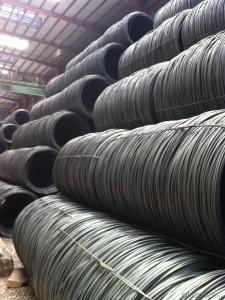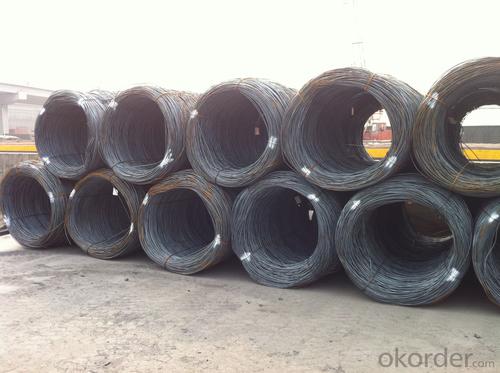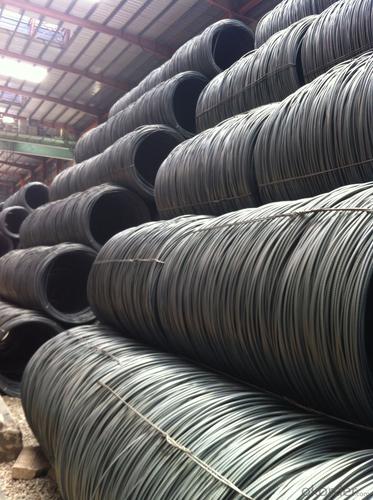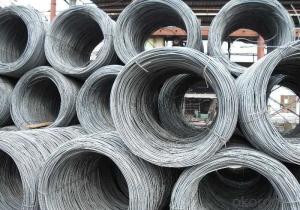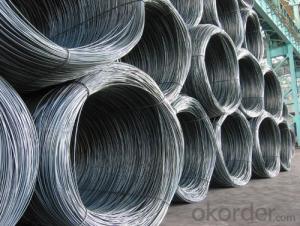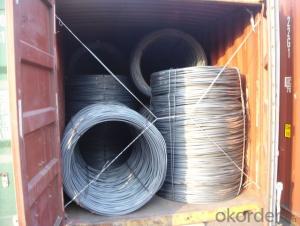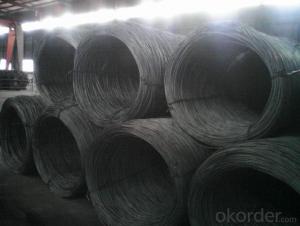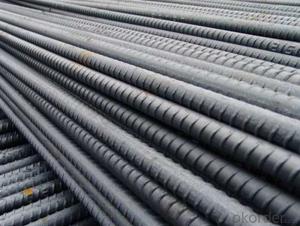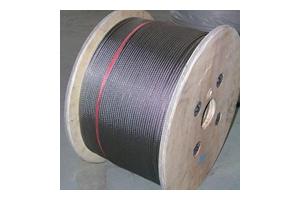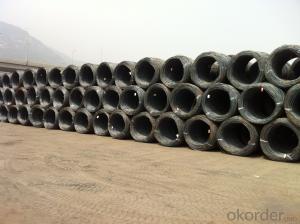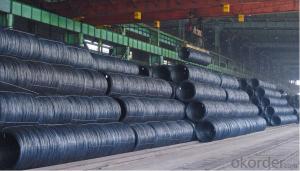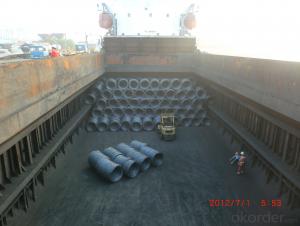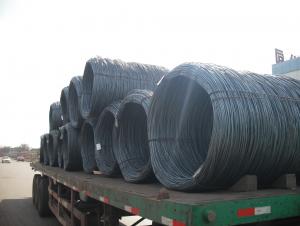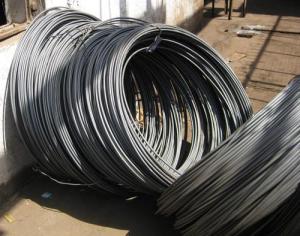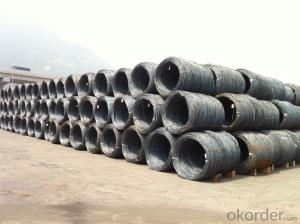Hot Rolled Steel Wire Rods with Best Quality and Price
- Loading Port:
- Tianjin
- Payment Terms:
- TT OR LC
- Min Order Qty:
- 25 m.t
- Supply Capability:
- 10000 m.t/month
OKorder Service Pledge
OKorder Financial Service
You Might Also Like
OKorder is offering wire rods at great prices with worldwide shipping. Our supplier is a world-class manufacturer of steel, with our products utilized the world over. OKorder annually supplies products to European, North American and Asian markets. We provide quotations within 24 hours of receiving an inquiry and guarantee competitive prices.
Product Applications:
After hot-rolled the products shaped into coil and delivery as finished product, including round, square,rectangular, hexagonal and so on. Since most of the products are round, it is generally called wire rod. Carbon steel wire rod is widely used in construction and manufacturing. Carbon steel wire rod is mainly used for reinforcement of reinforced concrete and welded structure or reprocessed (roberts , nail, etc.) materials, especially used to produce wire drawing, welding electrode, nails, spring, electronic, precise machinery parts and so on.
Product Advantages:
OKorder's Wire rods are durable, strong, and resist corrosion.
Main Product Features:
· Premium quality
· Prompt delivery & seaworthy packing (30 days after receiving deposit)
· Corrosion resistance
· Can be recycled and reused
· Mill test certification
· Professional Service
· Competitive pricing
Product Specifications:
Manufacture: Hot rolled
Grade: SAE1006-SAE1018
Certificates: ISO, SGS, BV, CIQ
Packaging: Export packing, nude packing, in coils
Grade | Chemical Composition (%) | |||||
C | Mn | S | P | Si | B | |
SAE1008B | 0.10max | 0.32max | 0.045max | 0.040max | 0.30max | 0.0008min |
Mechanical properties | ||||||
Yield strength(N/mm2) | Tensile strength(N/mm2) | Elongation (%) | ||||
≥195 | 350-380 | ≥32 | ||||
FAQ:
Q1: Why buy Materials & Equipment from OKorder.com?
A1: All products offered byOKorder.com are carefully selected from China's most reliable manufacturing enterprises. Through its ISO certifications, OKorder.com adheres to the highest standards and a commitment to supply chain safety and customer satisfaction.
Q2: How do we guarantee the quality of our products?
A2: We have established an advanced quality management system which conducts strict quality tests at every step, from raw materials to the final product. At the same time, we provide extensive follow-up service assurances as required.
Q3: The products are invoicing on theoritical weight or on actual weight?
A3: Usually, on actual weight.
Images:
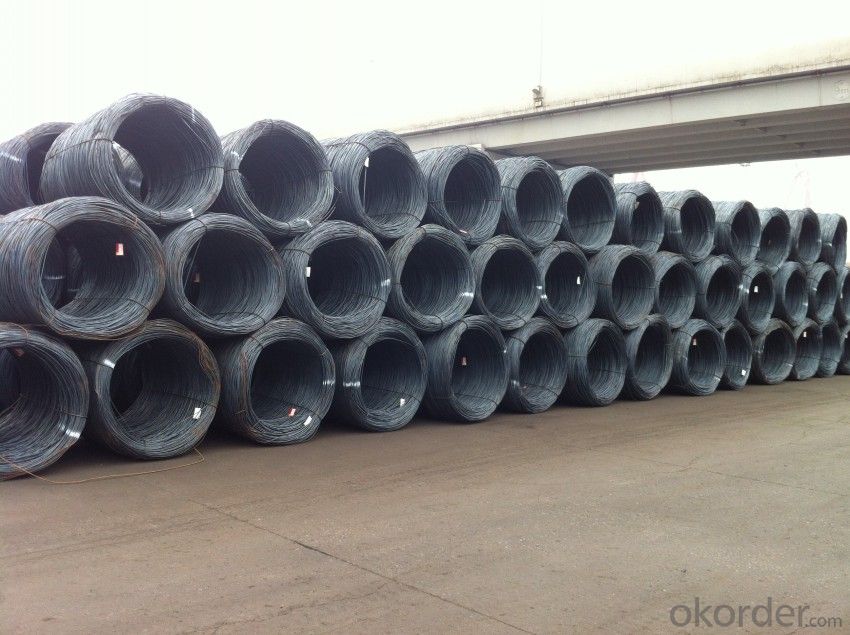
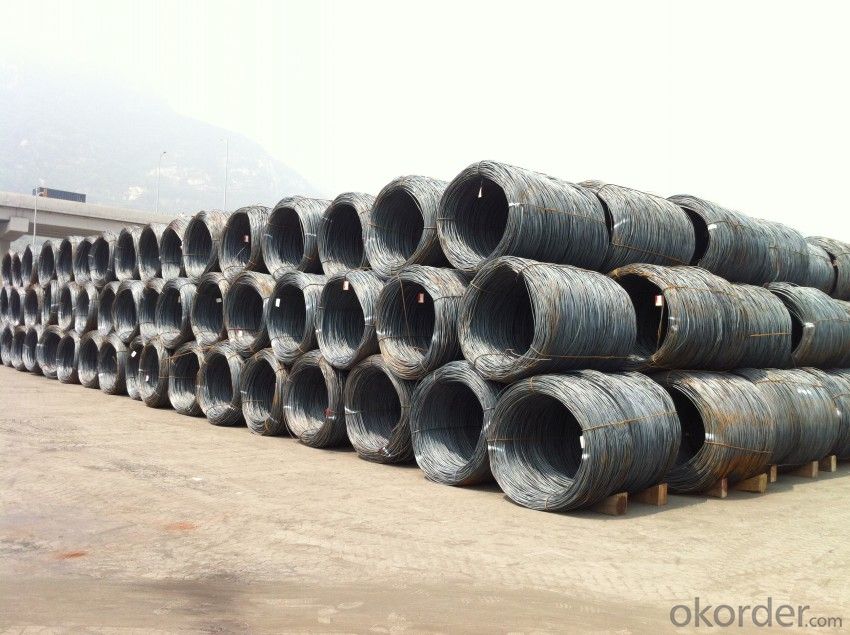
- Q: How is steel wire rod used in the manufacturing of wire trays?
- Steel wire rod is used in the manufacturing of wire trays as it is the primary material required to create the wire mesh structure of the tray. The steel wire rod is processed and shaped into the desired dimensions and then woven or welded together to form the sturdy and durable wire mesh that makes up the tray. This wire mesh structure allows the tray to hold and organize various items securely, making it an essential component in wire tray manufacturing.
- Q: How is steel wire rod used in the manufacturing of wire forms for automotive cooling systems?
- Due to its excellent strength and durability properties, steel wire rod is commonly utilized in the production of wire forms for automotive cooling systems. These wire forms are crucial components that provide structural support and help maintain the desired shape and functionality of various cooling system parts. One notable application of steel wire rod in automotive cooling systems is seen in the manufacturing of radiator cores. Radiator cores consist of a network of small tubes and fins that efficiently transfer heat from the engine coolant to the surrounding air. These tubes and fins are often connected and supported by wire forms made from steel wire rod. Steel wire rod is chosen for this purpose due to its high tensile strength, enabling the wire forms to withstand the pressure and vibration experienced in automotive cooling systems. Additionally, steel wire rod exhibits excellent resistance to corrosion, ensuring the wire forms' longevity and reliability even in harsh operating conditions. In the manufacturing process, steel wire rod is initially shaped using specialized machinery. Subsequently, the wire undergoes various heat treatment procedures to enhance its strength and flexibility. Once the wire forms are fabricated, they are integrated into the radiator core assembly, providing support and stability to the tubes and fins. Furthermore, steel wire rod finds use in the production of other wire forms such as hose clamps, brackets, and hooks in automotive cooling systems. These wire forms play vital roles in securing hoses, connecting components, and providing structural support to ensure the proper functioning of the cooling system. Overall, steel wire rod is an indispensable material in the manufacturing of wire forms for automotive cooling systems. Its strength, durability, and corrosion resistance make it an ideal choice for supporting and maintaining the integrity of various cooling system components, ultimately contributing to the efficient operation of the automotive cooling system.
- Q: How is steel wire rod used in the manufacturing of jewelry?
- Steel wire rod is commonly used in the manufacturing of jewelry as it provides strength and durability to delicate pieces. It is often used as a base material for creating intricate designs, such as wire wrapping or beading, serving as a foundation that holds gemstones, beads, or other decorative elements securely in place. Additionally, steel wire rod can be shaped, bent, and twisted to create unique jewelry components like clasps, jump rings, or chains, offering versatility and creative possibilities for jewelry designers.
- Q: What are the different tensile testing methods for steel wire rod?
- Steel wire rods can be evaluated for their mechanical properties using various tensile testing methods. These methods aim to measure characteristics like strength, ductility, and other important factors. Some commonly used methods for testing steel wire rods include: 1. The Standard Tensile Test involves subjecting a sample of the steel wire rod to an increasing load until it breaks. This allows for the calculation of properties like ultimate tensile strength, yield strength, and elongation at fracture. 2. The Charpy Impact Test measures the energy absorbed during the fracture of a notched specimen. It involves striking the sample with a pendulum hammer and recording the absorbed energy. This test is useful for assessing the material's resistance to sudden impact or shock loading. 3. The Bend Test evaluates the material's ductility and resistance to cracking by bending a specimen to a specific angle without fracturing. Any signs of cracking or fracture are noted during this test. 4. The Hardness Test determines the material's resistance to penetration or indentation. Different hardness testing methods, such as Rockwell, Brinell, and Vickers tests, are available. These tests involve applying a known load to the specimen surface and measuring the resulting indentation. Hardness values can be correlated to tensile strength, making this test useful for quality control. 5. The Fatigue Test evaluates the material's endurance limit and fatigue life under repeated cyclic loading. The specimen is subjected to varying loads or stress amplitudes until failure occurs. This test helps determine the material's ability to withstand repetitive loading conditions over time. Overall, these various tensile testing methods provide valuable information about the mechanical properties of steel wire rods. This helps engineers and manufacturers ensure that the material meets the required specifications for its intended applications.
- Q: How does the fatigue strength of steel wire rod vary with different wire drawing processes?
- The fatigue strength of steel wire rod can vary with different wire drawing processes. The fatigue strength generally increases with the reduction in wire diameter achieved through wire drawing. This is because the wire drawing process helps to align the grain structure of the steel wire, leading to improved mechanical properties and increased resistance to fatigue failure. Additionally, the wire drawing process can also eliminate surface defects and impurities, further enhancing the fatigue strength of the steel wire rod.
- Q: What are the different surface protection materials used for steel wire rod?
- Steel wire rods can be protected using various surface protection materials. These materials are applied to the wire rod's surface to prevent corrosion and other forms of damage. One commonly used surface protection material for steel wire rods is zinc coating. This involves immersing the wire rod in a hot-dip galvanizing process, which results in a layer of zinc on its surface. Zinc acts as a highly effective corrosion inhibitor and creates a protective barrier between the steel and its environment. This coating is typically used for wire rods that will be exposed to harsh or corrosive conditions. Polymer coating is another surface protection material for steel wire rods. It can be applied using different methods like extrusion or dip coating. These coatings serve as a barrier against moisture, chemicals, and abrasion, effectively preventing corrosion and prolonging the wire rod's lifespan. Polymer coatings are commonly used for wire rods in indoor or outdoor applications that require corrosion resistance. Phosphate coating is a surface protection material that involves immersing the wire rod in a phosphate solution, resulting in a thin phosphate layer on its surface. This coating enhances adhesion for subsequent coatings or paints and offers some corrosion resistance. It is often used as a pre-treatment before applying other surface protection materials. Lastly, epoxy coating is a widely used surface protection material for steel wire rods. It is typically applied through electrostatic spray deposition. Epoxy coatings provide excellent corrosion resistance, chemical resistance, and durability. They are commonly used for wire rods exposed to harsh environments like marine or industrial applications. In conclusion, various surface protection materials, including zinc coating, polymer coating, phosphate coating, and epoxy coating, can be applied to steel wire rods. The selection of these materials depends on the specific requirements of the wire rod and its intended application.
- Q: What are the different types of wire mesh for filtration made from steel wire rod?
- There are several different types of wire mesh for filtration that are made from steel wire rod. These include: 1. Plain Weave Mesh: This is the most common and basic type of wire mesh. It is made by weaving the steel wire rod in a simple over-and-under pattern, creating a strong and sturdy mesh. Plain weave mesh is suitable for general filtration applications. 2. Twilled Weave Mesh: This type of wire mesh is characterized by a diagonal pattern created by the weave. It has a higher mesh count compared to plain weave, which results in a finer filtration capability. Twilled weave mesh is often used in applications where a higher level of filtration is required. 3. Dutch Weave Mesh: Dutch weave mesh is made by using two different wire diameters for the warp and weft wires. The warp wires are thicker, while the weft wires are thinner. This creates a tightly woven mesh with smaller openings in the weft direction, making it ideal for fine filtration applications. 4. Welded Mesh: Welded mesh is made by welding the intersecting points of the steel wire rod, creating a strong and durable mesh structure. It is commonly used in industrial filtration applications where high strength and rigidity are required. 5. Expanded Metal Mesh: Expanded metal mesh is produced by stretching and expanding a sheet of steel wire rod, creating diamond-shaped openings. This type of mesh offers excellent strength and rigidity and is often used in heavy-duty filtration applications. Each type of wire mesh offers different filtration capabilities and is suitable for specific applications. The choice of wire mesh for filtration made from steel wire rod depends on factors such as the desired filtration level, strength requirements, and the specific environment in which it will be used.
- Q: What are the main factors affecting the formability of steel wire rod?
- The main factors affecting the formability of steel wire rod include the composition and quality of the steel, the temperature at which the forming process takes place, the speed and force applied during forming, and the presence of any impurities or defects in the material. Additionally, the diameter and shape of the wire rod, as well as the lubrication used during forming, can also influence its formability.
- Q: How is steel wire rod used in the manufacturing of wire for bicycle spokes?
- Steel wire rod is an essential component in the manufacturing of wire for bicycle spokes. It serves as the raw material from which the wire is produced. The process begins with the steel wire rod being drawn through a series of dies to reduce its diameter and increase its length. This drawing process helps to strengthen the wire and improve its overall quality. Once the wire has been drawn to the desired diameter, it is then further processed to make it suitable for bicycle spokes. This involves a process called cold forging, where the wire is bent and shaped into the desired form. Cold forging helps to enhance the wire's strength and durability, ensuring it can withstand the rigors of bicycle use. After the cold forging process, the wire is often subjected to additional treatments, such as heat treatment or galvanization. Heat treatment helps to further strengthen the wire, while galvanization involves coating the wire with a layer of zinc to protect against corrosion. The final step in the manufacturing of wire for bicycle spokes involves cutting the wire to the desired length and threading it onto a spoke nipple. This completes the production process, resulting in a strong and reliable wire that can be used to build sturdy and durable bicycle spokes. In summary, steel wire rod plays a crucial role in the manufacturing of wire for bicycle spokes. It serves as the starting material, undergoes various processes to enhance its strength and durability, and ultimately forms the backbone of a reliable and high-quality spoke.
- Q: How are steel wire rods used in the production of wire hangers for hanging clothes?
- Steel wire rods are an essential component in the production of wire hangers for hanging clothes. These rods are typically made from high-quality, durable steel, which provides the necessary strength and rigidity to support the weight of garments. The first step in the production process involves cutting the steel wire rods into the desired length for the hangers. This can be done using specialized machinery or through manual cutting methods. Once the rods are cut, they are then bent into the familiar hanger shape, typically using a combination of automated bending machines and skilled workers. The steel wire rods are manipulated and shaped to form the top hook of the hanger, which allows it to be hung on a closet rod or other hanging mechanisms. Additionally, the rods are bent to form the curved body of the hanger, which provides a secure and stable structure for hanging clothes. After the basic shape of the hanger is formed, the steel wire rods may undergo additional processes to improve their functionality and aesthetics. This may include coating the rods with a layer of protective material, such as plastic or vinyl, to prevent rusting and provide a smooth surface for hanging delicate fabrics. The hangers can also be painted or coated with a variety of colors or finishes to match different branding or aesthetic preferences. Overall, steel wire rods play a crucial role in the production of wire hangers for hanging clothes. Their strength, durability, and versatility make them an ideal material for creating hangers that can support a wide range of garments. Whether it's in homes, retail stores, or laundry facilities, wire hangers made from steel wire rods are a staple tool for organizing and displaying clothes.
Send your message to us
Hot Rolled Steel Wire Rods with Best Quality and Price
- Loading Port:
- Tianjin
- Payment Terms:
- TT OR LC
- Min Order Qty:
- 25 m.t
- Supply Capability:
- 10000 m.t/month
OKorder Service Pledge
OKorder Financial Service
Similar products
Hot products
Hot Searches
Related keywords
